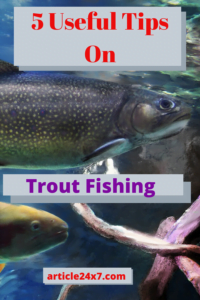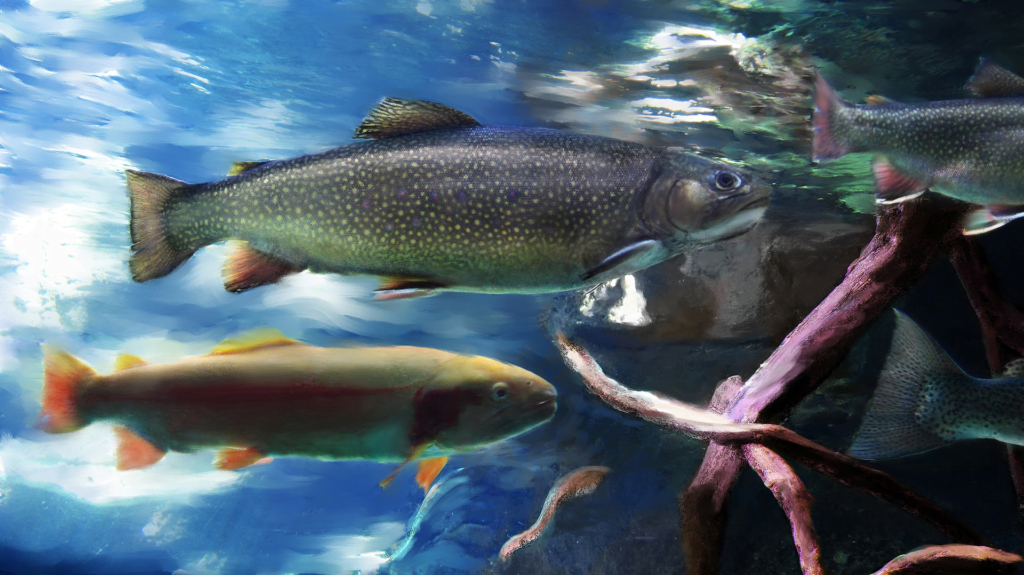Trout Fishing Basics
In fishing, trout are one of the favorite fishing friends of most anglers. These crafty fish are abundant anywhere. The native habitat of these crafty fish depends on the type of trout. In this article we will reveal the 5 Useful Tips On Trout Fishing to help you.
For brook trout, the native habitat includes the territory from Labrador westward to the Saskatchewan, while the rainbow trout is a native of the Pacific slope from Alaska to California.
On the other hand, brown trout has found its way into the waters of every state in the United States except Florida, Arkansas, Kansas, Kentucky, Louisiana, Mississippi, Missouri, North Dakota, Oklahoma, and Texas. It has been reported in the waters of some of these states, but according to conservation officials, no authentic reports have been received. It is also found in many parts of Canada.
What Season Is Best For Trout Fishing?
The best time of year to fish for trout is the spring. That’s because of a combination of factors including rising temperatures and a copious amount of food that is available in spring. When trouts are actively feeding they become good targets for the lures, flies and baits.

Wikipedia states that: “Trout are usually found in cool (50–60 °F or 10–16 °C), clear streams and lakes, although many of the species have anadromous strains as well. Young trout are referred to as troutlet, troutling or fry. They are distributed naturally throughout North America, northern Asia and Europe. Several species of trout were introduced to Australia and New Zealand by amateur fishing enthusiasts in the 19th century, effectively displacing and endangering several upland native fish species”
“While trout can be caught with a normal rod and reel, fly fishing is a distinctive method developed primarily for trout, and now extended to other species. Understanding how moving water shapes the stream channel makes it easier to find trout. In most streams, the current creates a riffle-run-pool pattern that repeats itself over and over. A deep pool may hold a big brown trout, but rainbows and smaller browns are likely found in runs. Riffles are where fishers will find small trout, called troutlet, during the day and larger trout crowding in during morning and evening feeding periods.”
Trout Fishing Tips
In trout fishing, there are some factors that need to be considered in order to have a successful catch:
1. For trout fishing, the leader should not be greased. It will not sink far enough to cause any difficulty when picking the line and lure from the water, but if it is allowed to float; it will cast a shadow on the bottom of the stream which may scare the trout.
2. The trout is one of the fishes that are usually secured through the use of the dry fly. For trout, the current as well as the pools should be fished. It may sometimes be a bit difficult to keep the fly from sinking or dragging because of the various conditions of the current, but this is a matter that the angler will have to figure out for himself.
3. It is not good practice when fishing for trout to fish directly upstream so the flies, line, and leader will float directly over fish. The fisherman should make the cast from one side of the stream so the fly will only float over the fish.
4. It is important to make the first cast the best. A feeding trout will usually strike the first lure presented if it is cast so that it will float over his private domain. The angler should never fail to fish the lower end of the pool first even if the trout are rising in the middle or upper end.
5. Trout are sometimes very moody or selective and will try the patience of any angler; hence, possibly a fly with less hackle will do the trick or it may be necessary to use a spent-wing fly or a fan wing.
Indeed, catching trout fishes can be lots of fun. The anglers just have to remember these tips in order to have a happy catch.
Three Of The Best And Easiest Ways To Fish For Trout Are:
- Suspending bait under a bobberwith a piece of worm or a little PowerBait.
- Fishingwith bait off the bottom.
- Retrieving a spinner, spoon or fly.
Related article: Advantages of Internet Marketing

